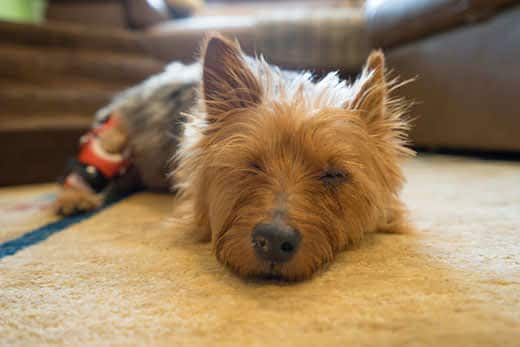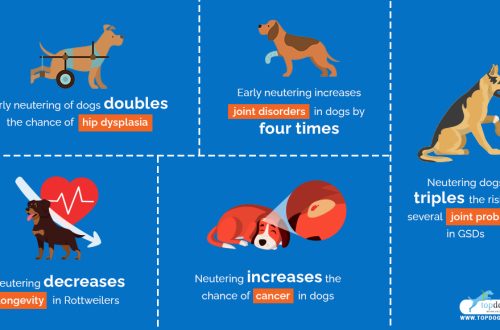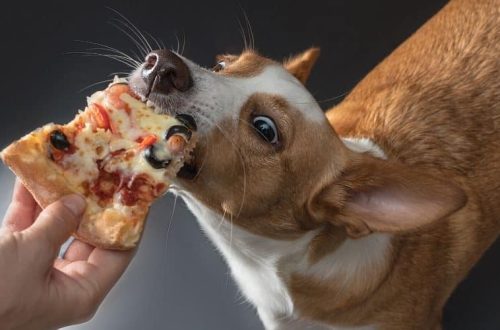
Recommendations for the rehabilitation of a dog after a torn ligament or ACL
One of the most common knee injuries in dogs is a torn anterior cruciate ligament, or ACL. Not only is this injury very painful, but it is also a known cause of knee arthritis in pets, which is why many pet owners opt for surgical treatment. However, proper home postoperative care is just as important for proper ACL recovery as the surgery itself.
What is surgical treatment for ACL rupture?
Dogs have cruciate ligaments inside the knee joint that help with stabilization. If your pet begins to limp in one hind leg, they may have torn their cranial cruciate ligament (CCL), which is very similar to the anterior cruciate ligament (ACL) in humans. An unstable knee causes inflammation, which leads to pain, reduced mobility, and early onset arthritis.

Surgical treatment of ACL rupture in dogs is aimed at stabilizing the knee to reduce pain and slow the development of arthritis in the knee joint. There are several different surgical procedures used to repair ACL in dogs. The veterinarian will advise what is best for the affected dog.
Tips for recovering a dog after surgery
After ACL surgery, the dog requires care, which is no less important for a successful recovery than the operation itself. In general, rehabilitation takes about six months. At this time, it is extremely important to remember the following actions.
1. Limit physical activity
Limiting physical activity is critical to the dog’s rehabilitation after surgery. Your surgeon will most likely give you instructions at the time of discharge with detailed information about postoperative care. They may include the following:
- Give your dog as much rest as possible after surgery for at least four weeks.
- Walk your pet on a leash for 10-15 minutes and only to go to the toilet.
- The dog must not run, jump or climb stairs. Some pets may need support to get up. You can make a towel tummy tuck for your dog and use it to help him get up.
- After four weeks, you can begin to increase the duration of walks, gradually adding 5 minutes each. The main thing is to keep the animal away from stairs or hills.
- Increasing the duration of walks to 30 minutes after six weeks and the inclusion of gentle slopes in the route – running, jumping or walking without a leash is still prohibited.
The restriction of physical activity will be adjusted based on the results of examinations by a veterinarian. He will evaluate the process of recovery of the knee joint. If the four-legged friend recovers quickly, the doctor will allow you to increase his activity level faster. If, on the other hand, the pet needs a little more time to recover, the veterinarian may advise not to rush to reduce the risk of postoperative complications. In any case, the specialist will tell you how to safely add exercise to your dog’s daily routine. If the owner finds it difficult to get the dog to behave calmly during the recovery period, you can ask the veterinarian to prescribe sedatives or sedatives.
2. Monitor the condition of the implant
All ACL surgeries require some type of implant to be placed in the knee. Therefore, it is important to monitor the postoperative wound for signs of implant-related complications. These include:
- Excessive swelling.
- Redness.
- Pain.
- Increased temperature in the area of the wound.
- Discharge or odor from the postoperative wound.
Dogs are usually sent home with a post-op dressing to provide compression and support for the knee. It is important that the pet always wears a protective collar that prevents licking and scratching of the postoperative wound.
3. Do not miss the control appointments with the veterinarian
The specialist will schedule follow-up appointments, usually two, four, and then eight weeks after surgery, to examine the dog. During these appointments, the veterinarian will examine the postoperative wound, ask questions about the dog’s well-being, and remove stitches or staples. In addition, he will take follow-up x-rays to make sure the knee is healing well. These check-ups should not be skipped to ensure successful recovery and return of the knee joint to normal function.

4. Give your dog painkillers
Knee surgery is painful. Your veterinarian will prescribe pain medication, which may include non-steroidal anti-inflammatory drugs. The dog can also receive pain medication through a skin patch. You can provide additional comfort to your pet by applying cold compresses to the knee immediately after surgery to reduce swelling. You can also buy a dense orthopedic bed for your dog, on which he can rest and recover.
5. Consider rehabilitation options
Another important part of the recovery process is doing rehabilitation exercises with your dog. Your four-legged friend will need to regain strength and mobility, and working with a rehabilitation specialist can help with this. Otherwise, the veterinarian will talk about exercises that can be done with the dog at home. For best results, all instructions must be strictly followed.
6. Keep nutrition under control
Being overweight is a known risk factor for ACL rupture in dogs. It is also not uncommon for pets with an ACL tear in one knee to end up with a similar injury in the other knee. While the dog is recovering, he will burn fewer calories and may gain weight if his diet is not controlled.
Weight gain puts extra stress and stress on your dog’s joints, and puts him at risk for other diseases. In addition, even after surgery, dogs with a torn ACL are at higher risk of developing arthritis in the affected joint. By purchasing dog food formulated for weight management and joint health, the owner will be able to provide the dog with the nutritional support it needs and help protect its healthy knee.
Following all of your veterinarian’s instructions for postoperative care for an ACL rupture is critical to the successful recovery of your dog. Knowing what to expect after surgery can help your pet recover as quickly as possible.





